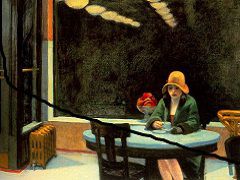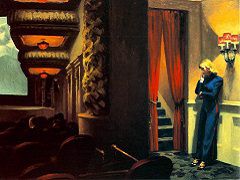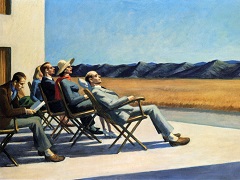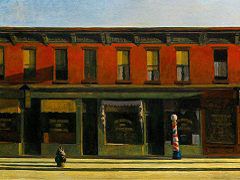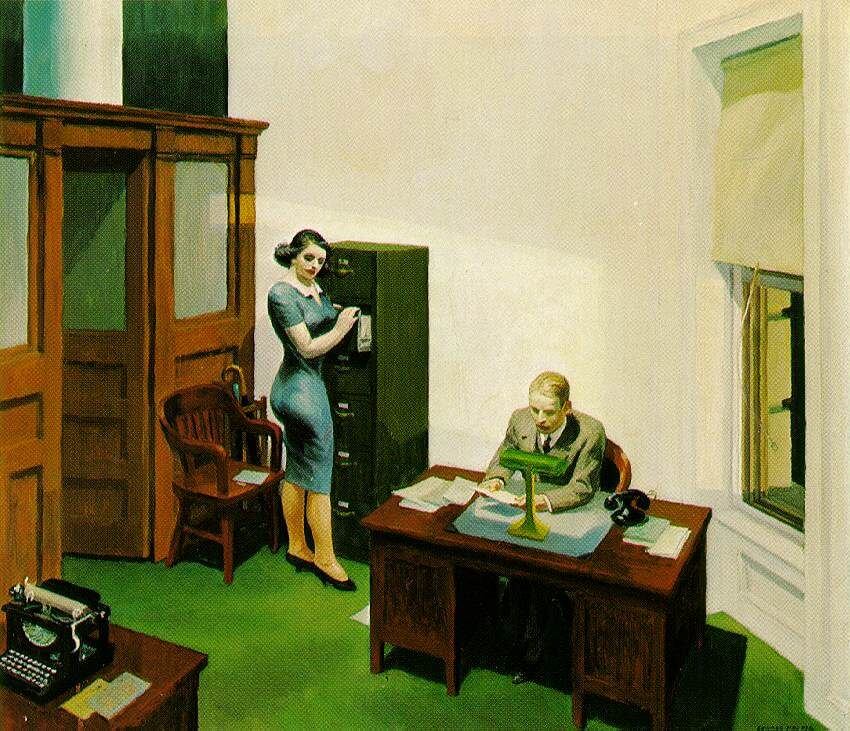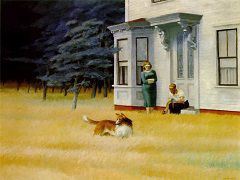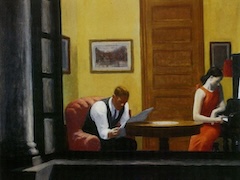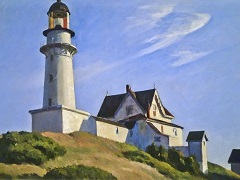Hourse by The Railroad, 1925 by Edward Hopper
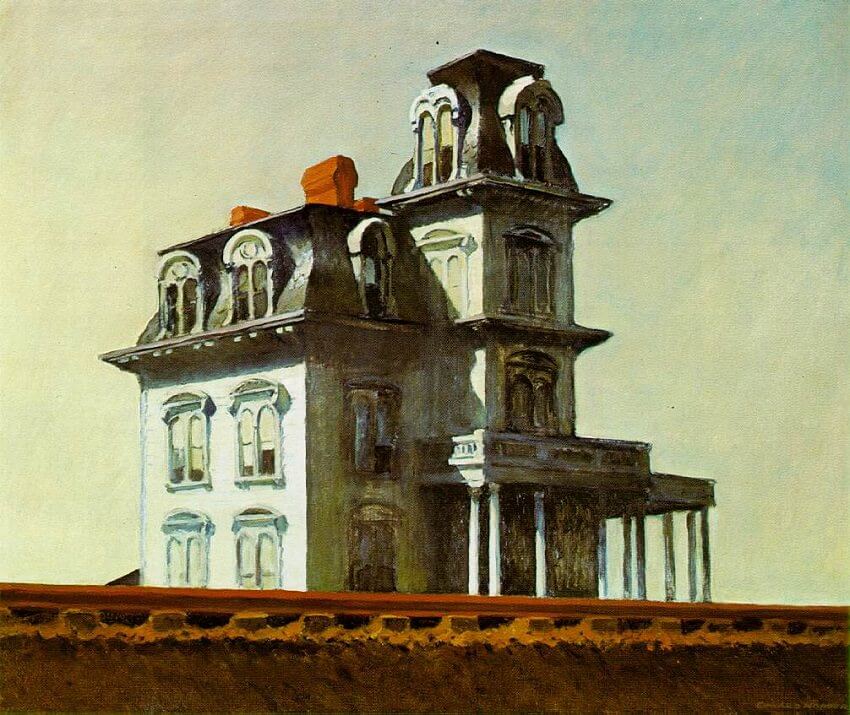
Hopper frequently used a straight. horizontal motif, usually a road or railroad track. to construct the space within the picture and to emphasize the division between the picture space and the viewer's world. Indeed, the more the viewer tries to penetrate the depths of a Hopper painting, the more impenetrable it becomes. What holds the viewer is that the artist's vision seems under control and yet, on closer inspection, the viewer realizes that the visible surface is a tissue of improbabilities and unreadable shifts in space. Hopper's view that nature and the contemporary world were incoherent contributed to his artistic vision.
The sunlight illuminating House by the Railroad is bright enough to cast deep shadows on the stately Victorian mansion, but not to chase away an air of sadness.
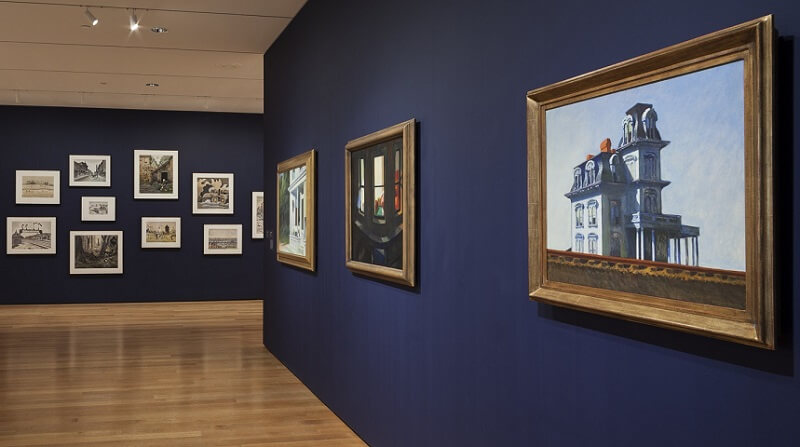
The painting expresses Edward Hopper's central theme: the alienation of modern life. Instead of happy, anecdotal pictures celebrating the energy and prosperity of the Roaring Twenties, Hopper portrayed modern life with unsentimental scenes of either physical or psychological isolation. Most are set in the city, where people often look uncomfortable and out of place. Others, like House by the Railroad, picture solitary buildings in commonplace landscapes. Hopper's House by the Railroad is symbolic of the loss that is felt when modern progress leaves an agrarian society behind.


